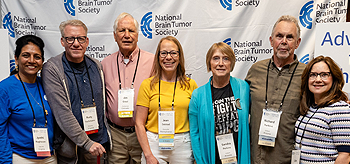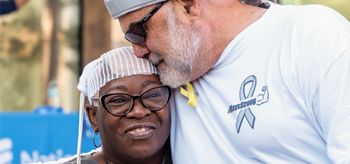The Jumpstarting Brain Tumor Drug Development Coalition (which includes the National Brain Tumor Society, Accelerate Brain Cancer Cure, Musella Foundation for Brain Tumor Research and Information, and the Society for Neuro-Oncology) is sponsoring workshops to evaluate and improve the use of a variety of endpoints in brain tumor clinical trials, with a goal of advancing the development of treatments for glioblastoma multiforme (GBM). These workshops bring together key stakeholders (clinicians, researchers, industry, patient advocates, the National Cancer Institute, and the FDA) to discuss issues related to the development and use of endpoints, and to develop action plans that will ultimately lead to greater clarity and interest in the pursuit of clinical trials that can achieve FDA approval of new brain tumor therapies. The discussions and action items that come of out these workshops are meant to inform and guide the neuro-oncology and clinical trial sponsor community.
The first of these workshops was held in Bethesda, Maryland, on January 30, 2014. This workshop’s discussion was focused on the capability of neuro-imaging to accurately assess GBM response to therapies, and the use of current and emerging imaging-based endpoints in clinical trials. Specifically, stakeholders discussed how to overcome the variables in medical imaging, such as image acquisition parameters, which have hindered the ability to accurately assess brain tumor response to therapies, and how to best incorporate endpoints that rely on imaging into clinical trials.
The workshop began with three formal preliminary presentations to establish context for the day’s discussions: “Efficacy Endpoints in Glioblastoma Multiforme Clinical Trials – A Regulatory Perspective,” “Avastin & the Basis of Approval for GBM in 2009,” and “Current Brain Tumor Imaging Protocols in Multicenter Trials.” After the preliminary presentations, the workshop continued with four panel-led discussions. The panels consisted of experts in neuro-oncology and neuro-radiology including FDA officials, industry representatives, and medical/academic researchers. After a short overview presentation by each panel, a two-part discussion period followed: (1) response by panelists to central questions posed by the moderator, and (2) facilitated audience question and answer.



